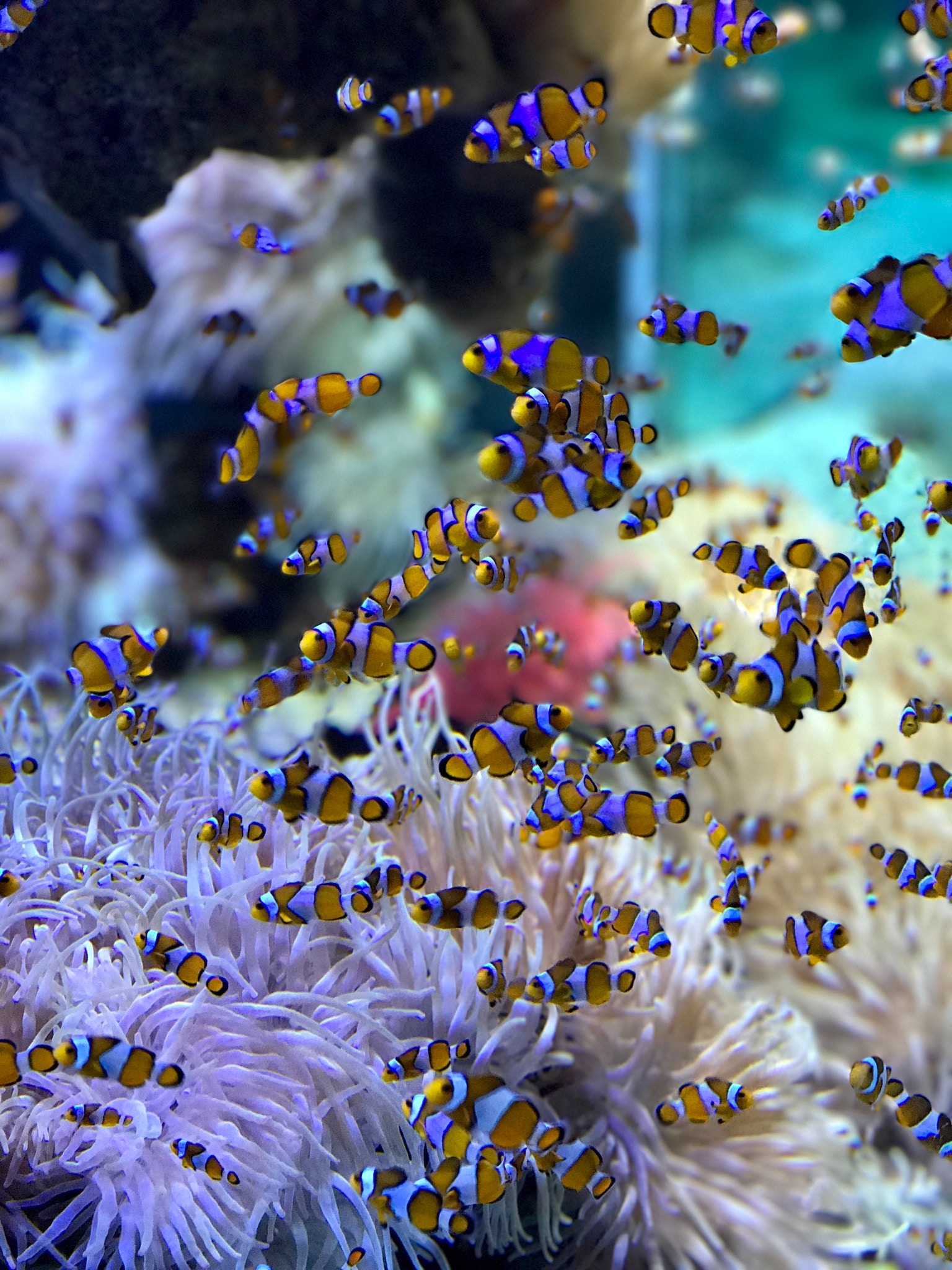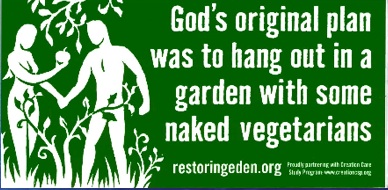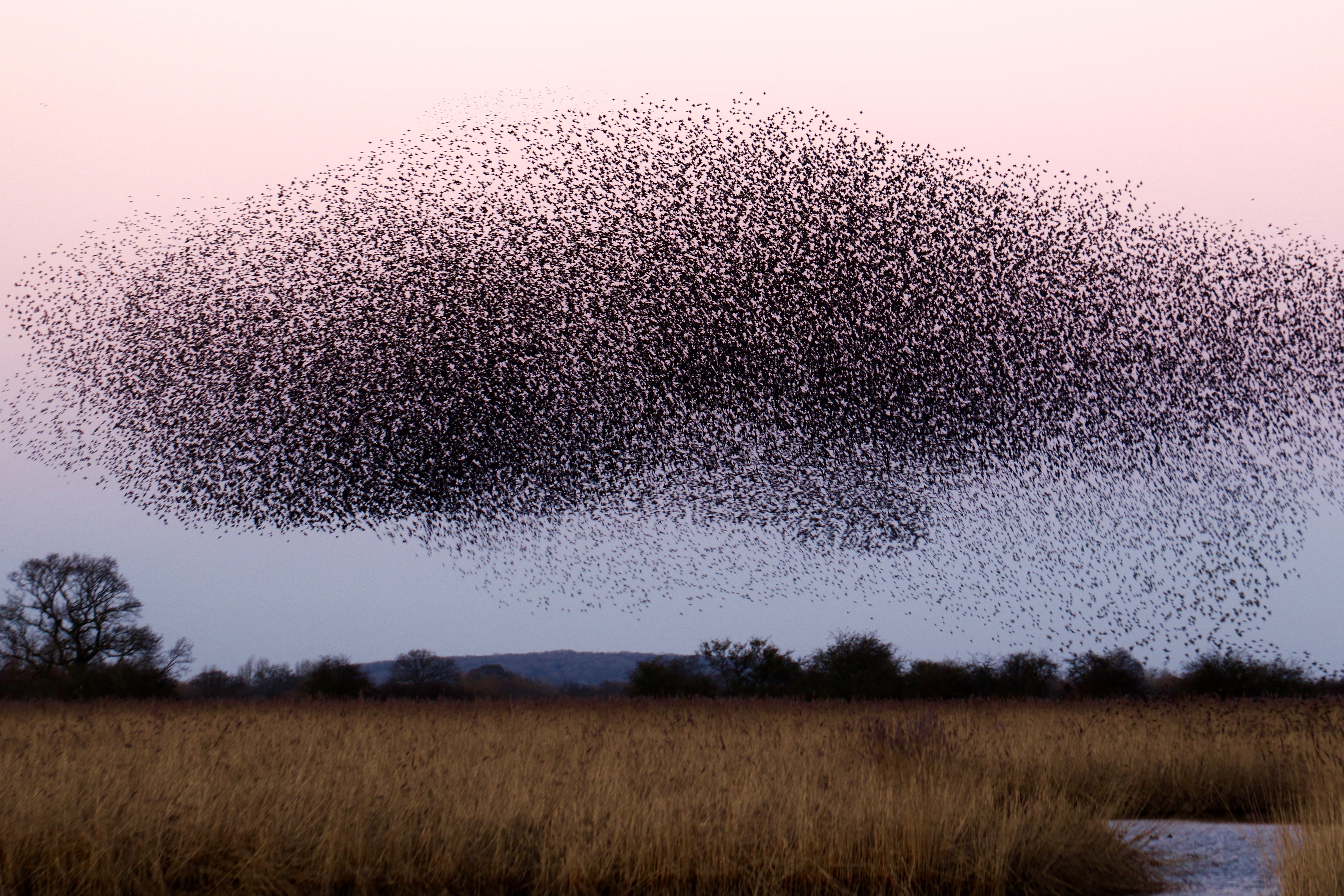Chapter 2: The Genesis of Eco-Theology — Is Christianity to Blame for our “Ecologic Crisis”?
2.2 The Genesis of Eco-Theology
So let’s start at the very beginning and take a look at what I call the Genesis of Eco-Theology.[1] Most of the commentary that pegs the Bible as anti-environmental, including White’s thesis, attends to just a couple of passages in Genesis, as if those few lines suffice to judge a whole tradition. This can lead to persuasive claims, especially for less theologically informed readers, but it is always important to know the context of a verse within a chapter. After all, if someone was reading a scientific article, or any other piece of literature and made criticisms based on only reading a couple of sentences, we wouldn’t expect those criticisms to be very reliable.
The Hebrew Bible (and Christian “Old Testament”) begins with the book of Genesis, which starts with this line: “In the beginning God created the heavens and the Earth” (Gen. 1:1, NIV).[2] Note at this point that the earth is “formless and void,” darkness is over the the surface of the deep, and then the wind (ruach) of God sweeps over the face of the waters. So, there were some primordial waters, a dark deep, some sort of chaotic substrate over which God’s breath (or spirit) swept. This is the beginning.
And then God speaks some things into being. “Let there be light” (Day 1) and “let there be sky” (Day 2), and “let there be dry ground” (Day 3). God orders (or structures) something at each step – light is separated from darkness, yielding day and night; waters above are separated from waters below yielding sky; the waters under the sky are concentrated in places to let dry land emerge so there is now land and sea. Then God “lets” the land get in on the act – God says “let the land produce vegetation” – plants and trees of all kinds (Day 3). And God says “let there be lights in the expanse of the sky, to set apart day and night and seasons, yielding sun and moon and the stars” (Day 4). And now the sea gets its cue: “let the water bring forth swarms of living things and let birds fly in the skies”; and so the waters teemed with creatures and all the winged birds took to the skies (Day 5). And the land again joins the creative act as God says “let the earth bring forth creatures of every kind,” and now all manner of creatures, livestock, and wild animals entered the mix (Day 6). Between hovering and speaking things into existence and letting land and sea bring forth creatures, God’s presence and spirit and Word are acting together within creation to bring all things into being.

One important moment in this creative sweep comes after the waters have brought forth creatures: “God blessed them, saying, ‘Be fruitful and multiply and fill the waters in the seas, and let birds multiply on the earth.’” (Gen. 1:22, NRSV). The first divine blessing in the Bible is for the fish and birds, so we know that God wants them to flourish. On the same day that all the other land creatures and mammals were created, God also creates humans, male and female, in the image and likeness of God and lets them rule (gives them dominion, radah) over the fish, birds, and other creatures. We’ve now reached the first verse that often gets mentioned by environmental critics, Gen. 1:26, but it will be quickly overshadowed by Gen. 1:28, the mother of all verses for environmental criticism. And then, like God had done with the fish and birds, God blessed the humans and said to them, “Be fruitful and multiply (rabah); fill/replenish the earth and subdue (kabash) it. Rule/have dominion (radah) over the fish, birds, and every living creature” (Gen 1:28).
It’s worth noting a couple of points here: humans get a blessing just like the fish and birds, but they don’t get their own day of creation – they come along on the same day as other land creatures (and indeed, share most of their DNA with their mammalian kin, who also came forth from the earth – more below on human “earthiness” in Genesis 2). And as the next verse makes clear, God then invites the humans to eat plants, alongside the other creatures – “everything that has the breath of life in it,” to them God gives green plants for food. As theologian Karl Barth noted, humans and other creatures are “referred to the same table” to eat.[3] Or as the bumper sticker from one faith-based environmental organization (Restoring Eden) puts it:

Whatever the case may be about the language of “dominion” and “subdue”, it apparently does not involve humans eating animals, so we should question how much it applies to any system or culture where humans eat meat. For contemporary readers, perhaps this suggests that only vegetarians should be allowed to hold positions of responsibility for managing the earth (and perhaps only vegetarians are blessed to be fruitful and multiply?). I realize this may sound absurd to some readers – we will need to look at more than just these few verses for a more reasoned view.
As a preliminary summary: in this biblical account, creation takes place within a created order and by God’s creative will, through a process – not just from an act of fiat or even a series of acts of fiat – but also through prior things enabling the development and emergence of later things. There are three days of structuring, ordering, and separating things (days/nights, heaven/earth, water/land), three days of populating things with creatures, and then a day of rest.
There is one other obvious point so far which I have saved for now: as God creates day by day[4], God stops and sees that what is created is good, so we hear a repeated line after each creation: “and God saw that it was Good” in reference to the light (1:4), earth and seas (1:10), vegetation (1:12), lights in the dome (sun, moon and stars, 1:18), sea creatures and birds (1:21), and land creatures (1:25). God saw each of these creations and saw that they were good, and after all things had been created (including humans), and God saw all that had been made, the text says that God saw that it was “very good” (1:31). This is the ending point of the first chapter of Genesis: each of the different parts of creation are good, and all of it together is exceedingly good. This is something that God, and perhaps humans too (made in God’s likeness), can “see.”
This point about the goodness of creation is worth highlighting further. First, an important device in biblical Hebrew is that when something is important, a favorite way to signal importance is by repetition. So, to be told over and over (six times, in fact), that parts of creation are good – and a seventh time that all things together are very good – is a neon biblical sign signaling significance. No reader should miss that God sees and considers creation good; nothing in this chapter, the beginning of the whole Bible, is emphasized more. Second, note that God does not say, “Let there be light, and I declare that the light is good!”; rather, God creates, and then once that thing exists, it’s goodness becomes apparent to God. This makes it clear that God sees the value and goodness in all of creation, and the text is at pains to make sure the reader notices that God says all these things are good. Secular environmental ethicists have built arguments for decades in an attempt to solidly ground the notion that nature has intrinsic value – in part, to counter the apparent lack of regard for the planet that Americans have – and here, on page and chapter one of the Bible, that seems to be an inescapable point. God can see that creation is good, and that point seems crucial enough to the biblical authors to highlight it more than any other point. In absolute contrast to Lynn White’s thesis about biblical ideas causing disregard for nature, it seems the point at the start of the bible is to make clear that the creation has intrinsic value – creation is profoundly good.

A third point develops this a bit further. Some commentators have suggested that the English language makes a relatively flimsy translation of the concept “very good.” They point to the language of the Greek septuagint version of the Bible, which renders this as lian kala – “altogether good and beautiful” (HE Metropolitan Kallistos (Ware) of Diokleia).[5] This seems apt – not only does “altogether” echo the point that God is now seeing all things together as especially good, but the notion of “beauty” is added here, which might help explain why God sees goodness in all these things. As philosopher and novelist Iris Murdoch argues (and we will comment on this in chapter 6), beauty is one of the easiest and most direct ways that humans recognize goodness beyond themselves and find value in other things. Our own experience probably confirms this – it’s easy to see the beauty of creation, and this beauty adds to our valuation of creation. As the second chapter of Genesis says (in the Adam and Eve garden account of God’s creation), in the garden “God made to grow every tree that is pleasant to sight and good for food” – note that beauty is mentioned before utility (food value). Eden, furthermore, is the term for “delight,”[6] and there is a certain revelling in beauty and delight that attends the acts of creation in other biblical accounts, too, such as in Proverbs 8:22-31 where the creation is recalled as the time when wisdom served as the craftsman at God’s side, dancing and full of delight day after day, rejoicing always in God’s presence, rejoicing in God’s whole creation and delighting in mankind.[7] No matter what else creation might be, there is always this beautiful, good original value that cannot be ignored.
And to be sure, many later passages extol the beauty and goodness of creation, particularly in the Psalms, like 19:1 where creation is admired for testifying to God, or the ecological Psalm, 104, where the fullness and interconnectedness within creation inspires rejoicing, and reflects divine presence. In the Christian New Testament, Paul writes in Romans 1:20 that no one has an excuse for doubting God’s existence, for since the creation of the world, God’s invisible qualities – God’s eternal power and divine nature – have been clearly seen in what has been made in creation. If creation is so closely linked to God, and goodness – if created things are good, and all things together are very good – then we might take a related point from Thomas Aquinas as an argument for the value of biodiversity when he said that since no one creature can adequately reflect all of God’s goodness,[8] then all things together more fully testify to the glory of God.

A final point of perspective about all this goodness: If God – the creator, the source of life, who in this account will be described as caring for human well-being – made something precious and amazing and life giving (life itself, actually!) and called it good, good, good, good, good, good, VERY good… that doesn’t sound like the kind of thing you’re supposed to degrade or destroy.
Beyond the point of goodness, the second most-emphasized point here is “blessing,” which gets repeated three times (seven and three are key numbers in scriptural texts, and three repetitions is the more standard device for emphasizing a point). God blesses the sea creatures and birds to be fruitful and multiply (1:21) and then also blesses the humans to be fruitful and multiply (1:28). Finally, as the story shifts into the second chapter of Genesis, on Day 7, God rests from creating, and God blesses and hallows the Sabbath day. As noted above, the blessing of fruitfulness is not only given to humans, so common sense tells us that if humans act in a way that jeopardizes the ability of other creatures to be fruitful and multiply, that works against God’s blessing of those creatures, which would not seem to be the way God would want humans to use their freedom. The blessing of the Sabbath day raises some additional points: the fact that God ceases from creative work and just lets creation “be” on the Sabbath indicates that creation is able to abide without God’s constant activity – creation has an integrity all its own that is part of why later in Genesis God affirms that so long as the earth endures, seedtime and harvest, seasons, and night and day will not cease (Gen 8:22). This promotes confidence in the reliability of creation – it has its own substance and regenerating capacity. This account of creation also shows us that just as sun, moon, stars, water, land, plants, and creatures are all a part of creation, God makes Sabbath rest a part of the order of creation, too, and blesses and hallows such rest.
There will be much more to say about biblical creation accounts by moving on to Genesis chapter 2, but first we should return to take a closer look at the environmentally problematic lines that focus on human dominion and “subduing” the earth in Genesis 1. It would seem that these verses fall within a context of goodness and blessing in creation, but as many have pointed out, these verses are challenging for those who seek a creation-friendly posture in Genesis.
Genesis 1:26 says: Then God said, “Let us make humankind in our image, according to our likeness; and let them have dominion over the fish of the sea, and over the birds of the air, and over the cattle, and over all the wild animals of the earth, and over every creeping thing that creeps upon the earth” (NRSV).
This hints at more to come in the following verses and suggests that there is something special about humans, who are made in God’s image[9], and to whom “dominion” over other creatures has been granted.[10]
Genesis 1:27 builds on this: “So God created humankind in his image, in the image of God he created them; male and female he created them” (NRSV).
It may be because humans are in God’s image that they make a reasonable choice for the responsibility of dominion. From a Christian perspective, the image of God is also conditioned by the person of Jesus, believed by Christians to be Messiah/Christ, son of God, part of the trinity of Father, Son and Holy Spirit; Jesus’ model of wielding power would therefore be the prime example of proper human behavior, and notably the leadership of Jesus was self-sacrificial, servant leadership. Jesus is an example of one who laid down his life for those “under” him, one who endured death rather than exercise any divine power for self-preservation (both during his temptation in the wilderness at the start of his ministry, and at his death when some of his followers encouraged him to avoid the persecution that seemed headed his way), thereby showing restraint. This echoes the Jewish image of a proper ruler (where “ruler” comes from the same root as rule/dominion, radah), who is not to Lord his power over others, and is to rule gently, not exploiting his people. So while this role of power sounds potentially dangerous, the biblical view of such a role is in contrast to a ruler who would use his or her power for exploitation.
Next comes the blessing of Genesis 1:28: God blessed them, and God said to them, “Be fruitful and multiply, and fill the earth and subdue it; and have dominion over the fish of the sea and over the birds of the air and over every living thing that moves upon the earth” (NRSV, emphasis added).
First, what is this business about multiplying? In an age when many environmentalists have wrestled with the challenges of growing human populations, this blessing is often suspected of encouraging unchecked population growth, so from that perspective, it sounds like a source of environmental strain. But seeing this passage in context, note that these are the instructions given to the very first humans. According to the story, they have been made amid the already flourishing creation where the waters teem with creatures, birds swarm in the sky, and creatures are all around the earth. If humans are to make it, they’ll need to get busy and start reproducing. Also note in this regard that these Genesis passages are the start of a narrative that develops along many storylines, such as in Exodus 1:7, where the Israelites have settled in Egypt – they were “exceedingly fruitful; they multiplied greatly, increased in numbers and became so numerous that the land was filled with them” (NIV).
In the trajectory of the larger story that begins here, there are times when a land is now full of God’s people, so this charge to multiply to fullness appears to be an encouragement that can be fulfilled, rather than a perennial order to just keep multiplying without worry (like some population-control environmentalists seem to suspect is the agenda of the Bible).[11]
But notice another sense of the word “fill” – the passage says “be fruitful and multiply, fill the land… and subdue it.” The King James translation of the word “fill” is “replenish,” and that suggests a responsiveness to the fullness of the earth. As Psalm 24 says, “the Earth is the Lord’s, and the fulness thereof…” (KJV). The description so far of creation, with waters teeming with creatures and swarms of life on the planet, suggests abundance. “Replenish the Earth and subdue it” would suggest keeping the earth “full” and abundant so as to harvest from that abundance. You might even call it a good mandate for natural resource management. So perhaps “fill the earth” might suggest a charge to “keep it full,” which isn’t such bad advice. But we still have to deal with the terms “subdue” and have “dominion/rule.”
There’s no getting around the relatively rough sense of these terms, at least that for “subdue”:
- Subdue (kabash) – trample under foot, enslave, subjugate, conquer, force, molest, overcome, bring under control
- Have dominion (radah) – rule, govern, reign, officiate, trample grapes
It’s easy to see the environmentalist complaint – most of the senses of “subdue” sound like harsh treatment, so a ruler who is supposed to subdue the land sounds like a potential despoiler of ecosystems. But yet ruling, radah, is a royal responsibility (see Psalm 72) – it shouldn’t be harsh (see Ez 34:1-4 and Lev 25:43, 46). Proper ruling should be understood as caregiving, nurturing, not exploiting, especially in light of the norm of vegetarianism and God’s blessing to other creatures to also be fruitful and multiply. And if the Christian sense of servant leadership is applied, the ruler might be expected to serve the land or the creatures, even lay down their life for them.[12] This latter might be a bit of a stretch, because land, animals and people are different sorts of things to rule or serve, and indeed, this is the only place in the Bible where the term radah is used in relation to non-human creatures – elsewhere it denotes rule over people (where it is intended to be a caregiving rule). In another sort of switch-up, the term kabash, subdue, can be used to refer to coercive human relations (see Num 32:22, 29), but there is no enemy postulated here regarding the earth/land as there is in other verses where human enemies are part of the context. Remember, the context here is the very recent gift from God of a good land, good creatures, good plants, good heavens and earth, and a very good biosphere (humans included), so there has been no sense that the creation is some sort of enemy to be subdued; rather, we have been given a picture of teeming life and abundance that God blesses and sees as good.
Subdue/kabash does refer to land in other passages (conquering the promised land, for example), but Genesis 1 is likely more agricultural in intent; here, as with the instructions to multiply, the “beginning of all life” context is probably relevant – these are encouragements to the very first humans who will try to make a living off the land. Subdue, kabash, makes a probable reference to the requirements of agriculture, a difficult task especially in those days.[13] Subduing the land as such may have more sense of bringing order out of disorder – think about what it would take for the first humans to gather and grow food…make the soil productive… and be good stewards of the creatures.[14]

Think of it this way: you, the reader, are sitting somewhere, probably in a relatively climate-controlled space, reading this book on an electronic device whose very possibility represents an incredible amount of control of nature, and likely most everything about your life is linked to massive systems of managing and controlling natural resources, capital, and human labor. The earth is subdued now like never before, and we live off of the products of that control, some of us very comfortably, such that the idea of dirtying our hands with some harsh notion of subduing nature sounds far removed from our lives…but like the Budiansky quote at the beginning of the chapter, for most Americans, any sense that we are somehow living without causing much impact on the world is a very fake sense.
We will soon turn to the second creation story in Genesis Chapter 2, the garden story of Adam and Eve, which carries many similar elements and follows the basic line of the creation story in Genesis 1 but also has some stark differences. Where Genesis 1 takes an “ancient science” point of view, describing a relatively sequential creation process from a cosmic point of view, Genesis 2 frames the creation story more immediately from a human point of view, that of the original human characters, Adam and Eve. If we imagine the kind of instructions that God might give the very first humans, who are heading out into a vast world populated by almost no humans, and compare them to how God might advise humans today when there are over 7 billion humans already on the planet, perhaps we get a sense that we shouldn’t expect this story to directly address every question we might have about how to live in today’s world. But then, this isn’t a story designed to provide a list of do’s and don’ts – this is a commentary on the human condition and on the relations between God, humans, and the rest of creation.
- My goal here is to run through the Genesis account from creation to Noah and highlight significant points relevant to ecotheology and creation care. I am not suggesting that this chapter provides a comprehensive examination -- there will surely be some gaps in what I cover – our subject is only one of the most intensely studied pieces of literature in the entire world, and I don’t presume to be the final authority on these well-known texts. But I do think that anyone who still finds White’s thesis compelling must grapple with the points I highlight here. ↵
- I will follow standard abbreviation format for biblical verses, with a chapter number followed by a colon, followed by the relevant verse numbers within that chapter. ↵
- I have been unable to find the original citation of Barth's quote, though Dick Baer regularly quoted it in his teaching at Cornell, and Rod Garner's chapter on "Being Compassionate" in the book Teaching Virtue: The Contribution of Religious Education quotes Barth on this point on page 96. ↵
- The Hebrew term for “day” can also be translated as a longer period of time, like an “era.” ↵
- http://www.orth-transfiguration.org/safeguarding-the-creation-for-future-generations/ ↵
- “Fruitful” and “well-watered” are other meanings for “Eden.” ↵
- Richard Baer delighted in lecturing on this topic at Cornell University in his “Religion, Ethics and the Environment” course. ↵
- Aquinas wrote: “For He brought things into being in order that His goodness might be communicated to creatures, and be represented by them; and because His goodness could not be adequately represented by one creature alone, He produced many and diverse creatures, that what was wanting to one in the representation of the divine goodness might be supplied by another. For goodness, which in God is simple and uniform, in creatures is manifold and divided.” (St. Thomas Aquinas, Summa Theologica, I, 47, 1). ↵
- God’s image appears to be plural, which is intriguing, but not a point we will focus on here. ↵
- There’s an interesting spin on this granting of dominion in Islamic tradition, where tradition holds that the role of holding dominion, or vice-regency (where humans are considered God's vice-regents or vice-gerents), was first offered to other beings, like the mountain, trees, and other animals. Each refused the responsibility, but when vice-regency was finally offered to humans, they were the only ones to say “yes.” ↵
- Notably, once the Israelites became so numerous in Egypt, the Egyptians began to resent and persecute them, so biblical stories are not blind to the challenges of successful multiplying. ↵
- Andrew Linzey mentions a similar idea in his chapter: Linzey, A. “The Theological Basis of Animal Rights,” pp. 355-360 in Gottlieb, R.S., ed, This Sacred Earth: Religion, Nature, Environment (second edition), New York: Routledge, 2004. ↵
- Imagine an anachronistic alternative for this creation story: God says, “Don’t worry about toiling on the land, just go to the Walmart Supercenter down by the burning bush and get whatever food you need!” ↵
- Terrence Fretheim’s favors such an interpretation in his book, God and World in the Old Testament: A Relational Theology of Creation, Abingdon Press, 2005. ↵
